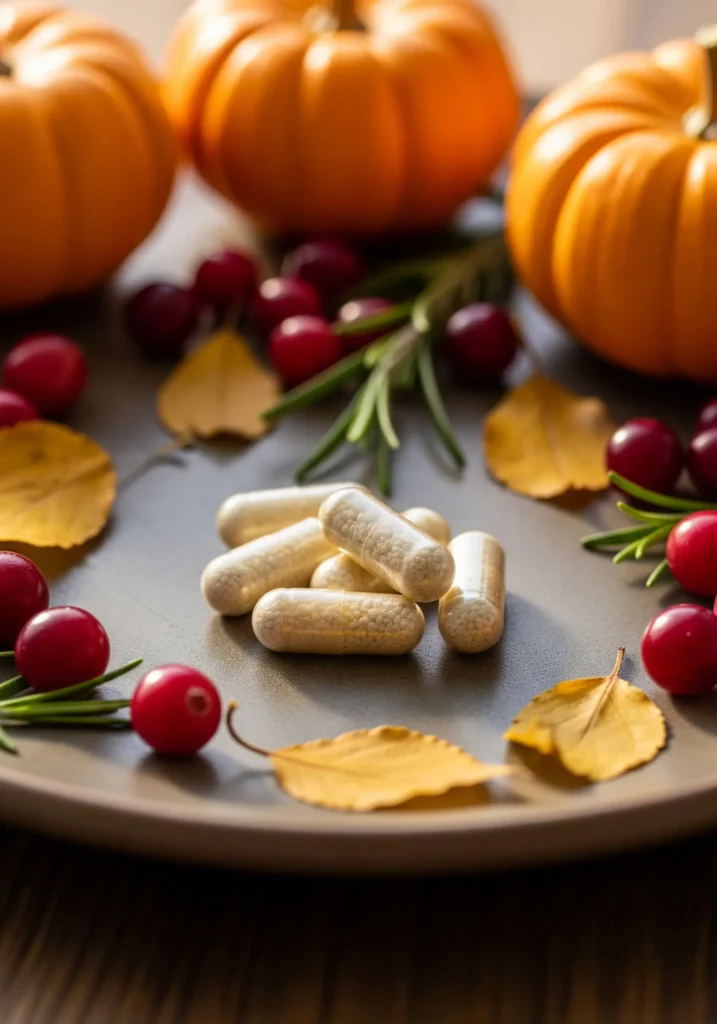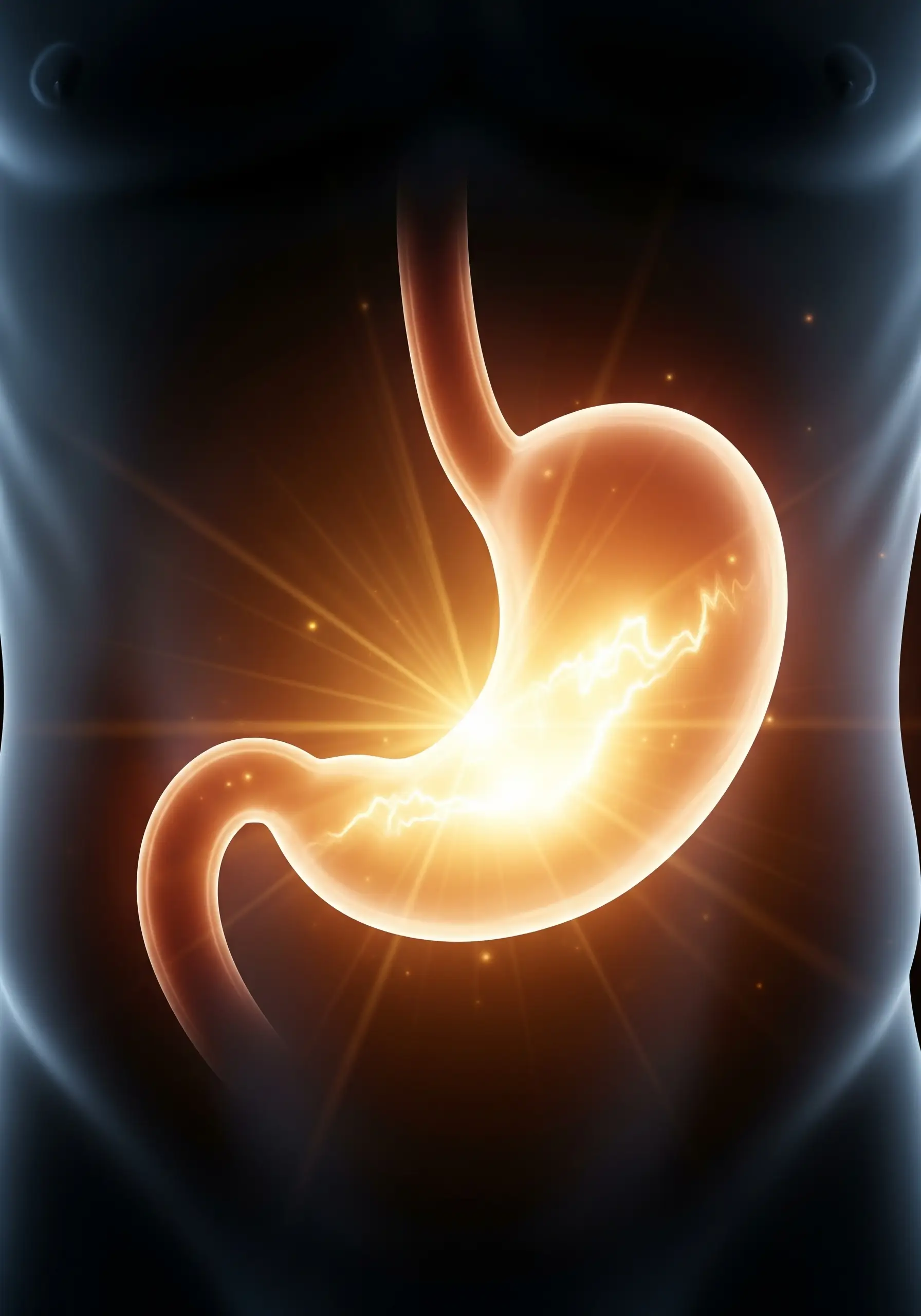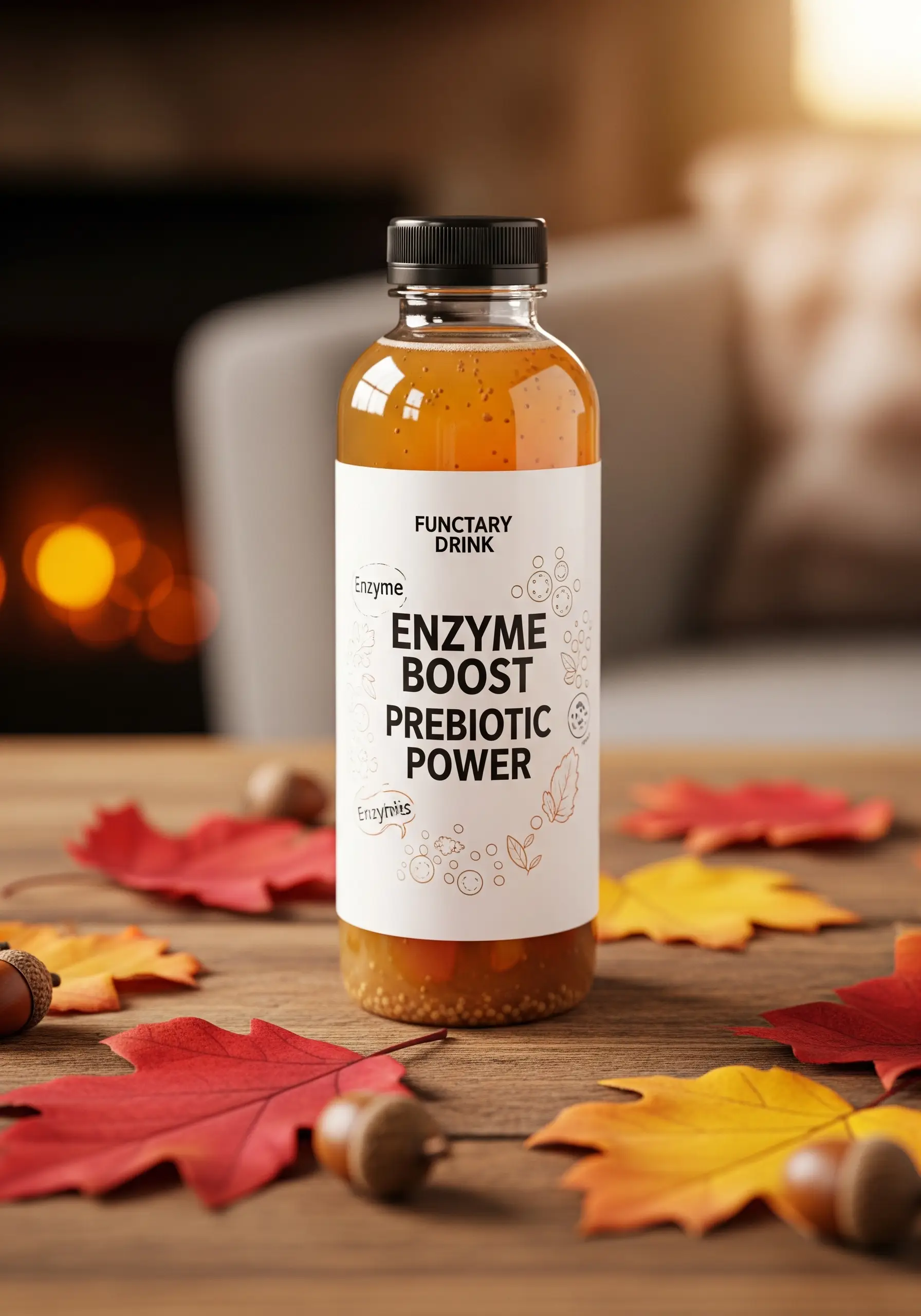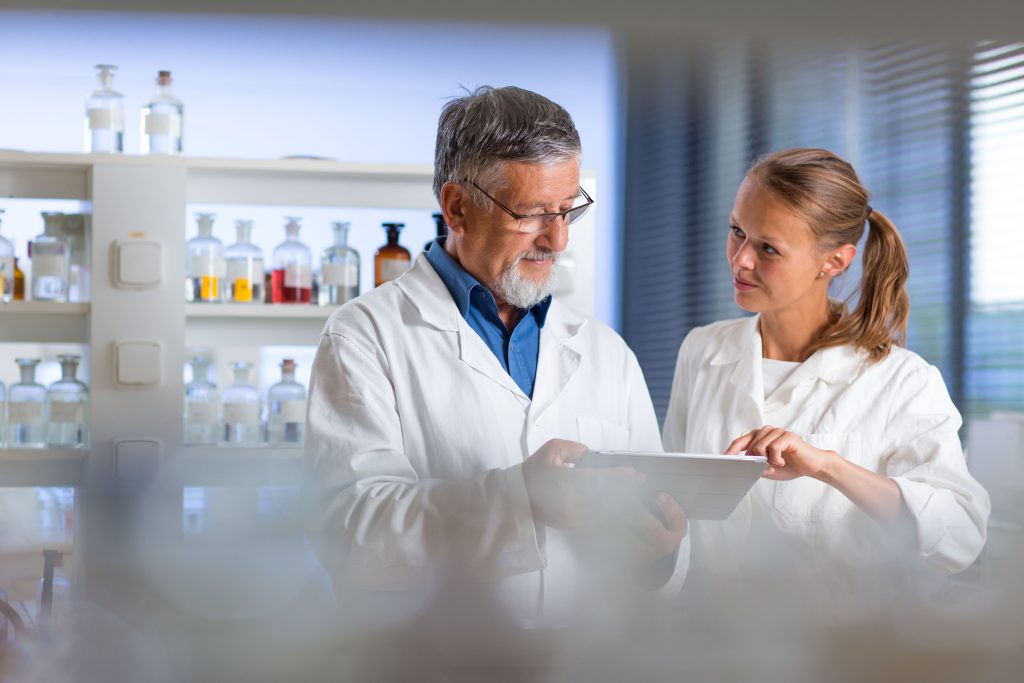

Autumn is the time when our body shifts into an “energy-saving mode”. We begin consuming more heavy foods, activity levels drop, and the digestive system becomes overloaded.
During this period, complaints of bloating, stomach heaviness, and lack of energy become more frequent.
One of the reasons is digestive enzyme deficiency — biological catalysts without which food cannot be fully digested and absorbed.
Modern nutraceuticals offer a new generation of enzyme complexes that not only improve digestion but also affect the microbiome, immunity, and even mood.

What Enzymes Are and Why They Are Important
Enzymes are proteins that catalyze chemical reactions in the body.
Main groups of digestive enzymes:
-
Amylases — break down carbohydrates;
-
Lipases — fats;
-
Proteases — proteins;
-
Cellulases — fiber;
-
Lactases — milk sugar.
When enzyme levels decrease due to overeating, stress, or age-related changes, food is incompletely digested. This leads to fatigue, bloating, dysbiosis, and reduced nutrient absorption.

Table 1. Main digestive enzymes and their roles
| Enzyme | What It Breaks Down | Where It Acts | Deficiency Symptoms |
|---|---|---|---|
| Amylase | Starch, carbohydrates | Oral cavity, pancreas | Fatigue after sweets, gas formation |
| Lipase | Fats | Pancreas | Heaviness after fatty foods, dull skin |
| Protease | Proteins | Stomach, intestines | Bloating, food intolerance |
| Cellulase | Plant fibers | Small intestine | Feeling of fullness |
| Lactase | Lactose | Intestines | Milk intolerance |

Enzymes and the Microbiome: A New Perspective
At the Vitafoods Europe 2025 exhibition, a dedicated section was focused on microbiome-enzyme combinations.
It has been proven that enzymes:
-
reduce the amount of undigested substrates that feed pathogenic bacteria;
-
improve the bioavailability of polyphenols and fiber, which serve as food for beneficial microflora;
-
reduce intestinal inflammation, which often occurs with dysbiosis.
Combining enzymes with prebiotics or postbiotics creates a “microbiome balance” effect, resulting in better digestion, mental clarity, and stable energy.
Table 2. Modern enzyme delivery systems (2025)
| Delivery System | Features | Bioavailability | Additional Effect |
|---|---|---|---|
| Enteric-coated capsules | Protect from stomach acid | High | Acts in the small intestine |
| Microencapsulated enzymes | Slow release | High | For chronic enzyme deficiency |
| Enzyme + prebiotic (inulin, FOS) | Supports the microbiome | Medium | Reduces bloating |
| Shots or powdered mixes for water | Convenient post-meal form | High | Trend of 2025 |
| Enzyme + postbiotic (SCFA metabolites) | Modulates immunity | Very high | For next-generation functional supplements |
Practical Recommendations
-
Take enzymes before or during meals — depending on the formula.
-
If you experience heaviness after fatty foods — choose formulas with lipase.
-
For bloating after legumes or vegetables — look for α-galactosidase.
-
For daily digestive support — use combined enzyme-prebiotic complexes.
-
Avoid continuous self-administration of high doses — it may “lazify” your own enzyme system.

FAQ
Can enzymes be taken continuously?
Short-term courses of 2–4 weeks after overeating, holidays, or stressful periods are safe. Continuous use — only under medical supervision.
What is the difference between plant and animal enzymes?
Plant enzymes (from Aspergillus oryzae, pineapple, papaya) act over a wider pH range and are better tolerated.
Do enzymes help with bloating?
Yes, especially formulas with α-galactosidase, which breaks down complex carbohydrates.
Can enzymes be combined with probiotics?
Yes, they work synergistically — enzymes create favorable conditions for beneficial bacteria growth.
When is it better to take enzymes — before or after meals?
Before — if the problem is with proteins, during — if with fats or carbohydrates.
Conclusions
Enzymes are the invisible heroes of our digestion. They not only help digest food but also shape microbiome balance, influence energy levels, and even mood.
New enzyme nutraceuticals with prebiotics and postbiotics open the era of “smart digestion”, where the body gains maximum benefit without overload.
Proper enzyme support in autumn is the path to lightness, stable energy, and strong immunity.
References
-
Martens E. C. et al. The role of enzymes in gut microbiota–host interactions. Nat Rev Microbiol, 2024.
-
Ghosh S. et al. Digestive enzyme supplementation and microbiome modulation. Nutrients, 2023.
-
Vitafoods Europe 2025 Trend Report. Next-generation enzyme blends for gut health.
-
-end=”5453″>Enzyme delivery systems in modern nutraceuticals. Food Funct, 2024.
-
Lee S. H. et al. Synergistic effect of enzymes and postbiotics on intestinal barrier integrity. J Funct Foods, 2025.




